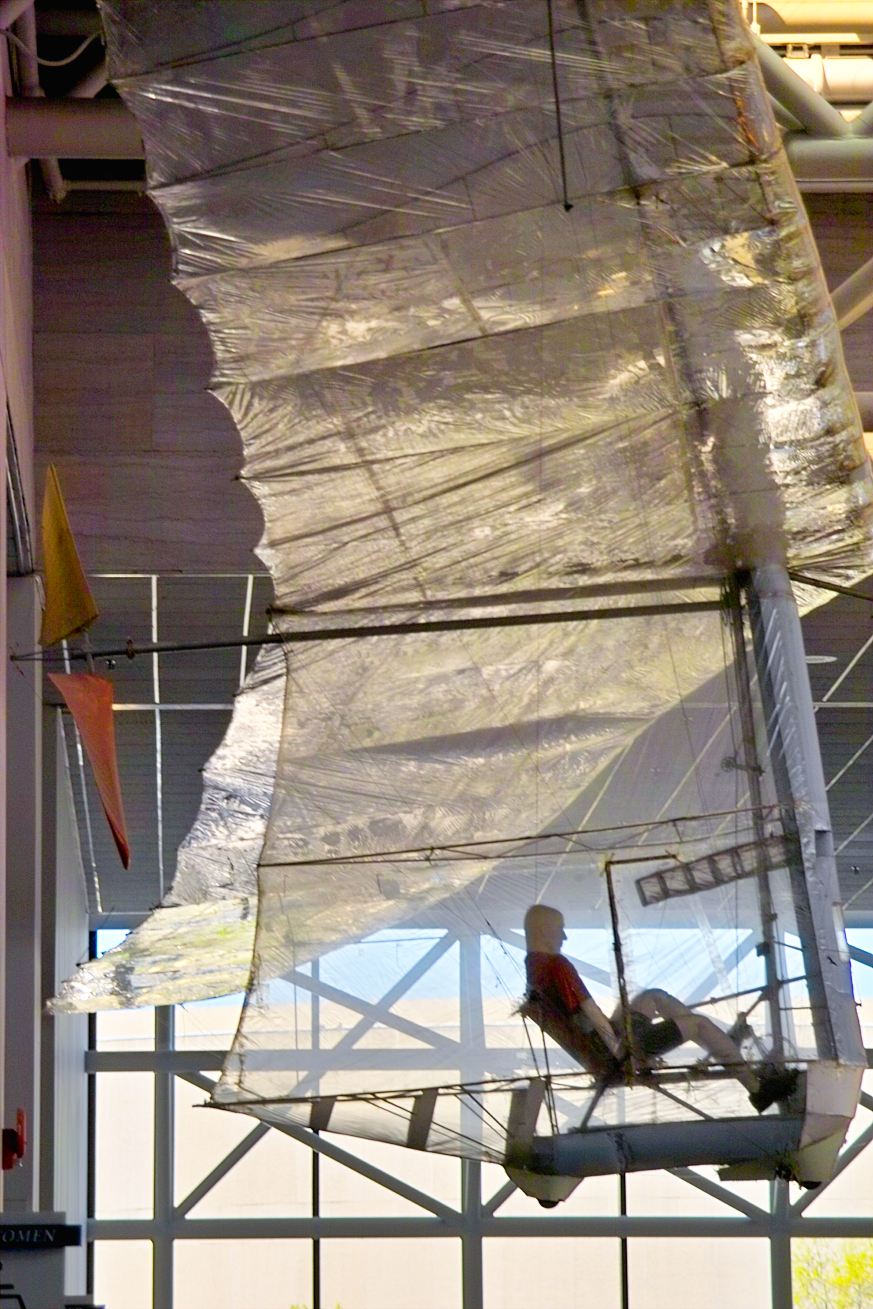- Gossamer Condor
Infobox Aircraft
name = Gossamer Condor
caption = The Gossamer Condor at the SmithsonianNational Air and Space Museum
type =experimental aircraft
national origin =United States
manufacturer =AeroVironment
designer =
first flight = 1977
introduction =
retired =
status = museum piece
primary user =
more users =
produced =
number built = 1
program cost =
unit cost =
developed from =
variants with their own articles =The Gossamer Condor is the first successful
human-powered aircraft . It was the first human powered airplane capable of controlled and sustained flight, able to win theKremer Prize .History
The Kremer Prize had been set up in 1959 by Henry Kremer, a British industrialist, and offered 50,000 pounds ($85,000) in prize money to the first group that could fly a human-powered aircraft over a figure-eight course covering a total of a mile (1.6 kilometers). The course also cosisted of a 10 feet pole that the aircraft have to fly over. Early attempts to build human-powered aircraft had focused on wooden designs, which proved too heavy.
In the early 1970s, Dr Paul B. MacCready and Dr Peter B. S. Lissaman, both of
AeroVironment Inc., took a fresh look at the challenge and came up with an unorthodox aircraft, the Gossamer Condor.The Gossamer Condor is basically a
flying wing , modified with the addition of a gondola for the pilot underneath and a canard control surface extended in front, and is mostly built of lightweight plastics. [http://www.vectorsite.net/twuav_12.html#m3 "SOLAR-POWERED UAVS: HALSOL & SOLAR HAPP", The Prehistory Of Endurance UAVs, by Greg Goebel, in the Public Domain] ]The aircraft, piloted by amateur cyclist and hang-glider pilot Bryan Allen, won the first
Kremer prize onAugust 23 ,1977 by completing a figure '8' course specified by theRoyal Aeronautical Society , atMinter Field inShafter, California .The aircraft is preserved at the Smithsonian
National Air and Space Museum .The success led Paul MacCready and AeroVironment to carry on with experimental aircraft::the
Gossamer Albatross , which crossed theEnglish Channel , :theSolar Challenger , a solar electric-powered version that also made an English Channel crossing, :NASA's Pathfinder/Helios series of unmanned solar-powered aircraft.pecifications
:Wingspan: 29.25m (96 ft):Length: 9.14 m (30 ft):Height: 5.49 m (18 ft):Weight: 31.75 kg (70 lb.)
ee also
* "
The Flight of the Gossamer Condor ", a 1978 short documentary filmReferences
External links
* [http://www.nasm.si.edu/research/aero/aircraft/maccread_condor.htm Condor at the Smithsonian]
* [http://www.donaldmonroe.com/ Site with an expanding photo archive of Gossamer-series aircraft, by the Gossamer Albatross team photographer]
* [http://www.gossamercondor.com THE FLIGHT OF THE GOSSAMER CONDOR DVD. Re-mastered & digitally restored in 2007 from a new Academy Film Archive preservation print. Won the Academy Award in 1978 for best Documentary Short Subject.]
* [http://www.ted.com/talks/view/id/176 Paul MacCready talking at TED]Further reading
*Morton Grosser. Gossamer Odyssey: The Triumph of Human-Powered Flight. MBI Press, 2004; Dover Publications, Inc., 1991; Houghton Mifflin Co., 1981
*Morton Grosser. On Gossamer Wings. York Custom Graphics, 1982
*Gosnell, Mariana. Zero Three Bravo. Alfred A. Knopf, Inc., 1993. (see chapter entitled Shafter)
Wikimedia Foundation. 2010.
